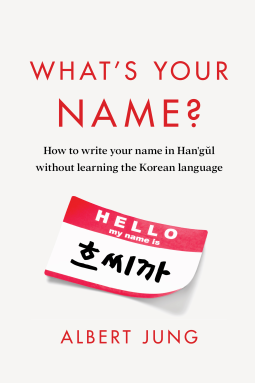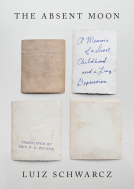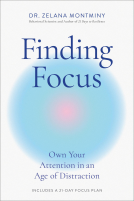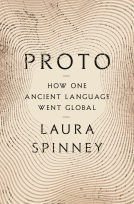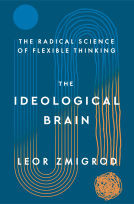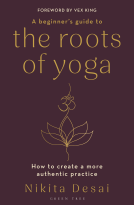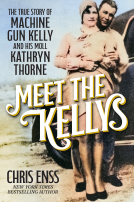What's Your Name?
How to write your name in Hangul without learning the Korean language
by Albert Jung
You must sign in to see if this title is available for request. Sign In or Register Now
Send NetGalley books directly to your Kindle or Kindle app
1
To read on a Kindle or Kindle app, please add kindle@netgalley.com as an approved email address to receive files in your Amazon account. Click here for step-by-step instructions.
2
Also find your Kindle email address within your Amazon account, and enter it here.
Pub Date Dec 03 2024 | Archive Date Jun 30 2025
Description
★ Gold Winner, Nonfiction Book Awards • Gold & Silver Medalist, The BookFest Awards ★
Discover a Revolutionary Way to Write Your Name in Hangul!
Have you tried free online guides or pricey basic courses to write your name in Korean, only to find they all rely on modern Hangul—a system modified since the 1930s for contemporary Korean tastes? Those free resources or pricey courses don’t capture the full nuance needed to transcribe diverse international pronunciations.
Enter What’s Your Name? – an award-winning, comprehensive guide that goes beyond modern Hangul. This book takes you on an illuminating journey from the original 15th-century design of Hangul to its modern adaptations, teaching you how to overcome the limitations of the current system and empowering you to transcribe any name accurately and with cultural nuance.
Inside, You Will Discover:
• A Structured, Step by Step Learning Path: From modern Hangul basics to historical transcription methods, learn to accurately write names from any language.
• Overcoming Modern Limitations: Free alternatives only teach the restricted modern system. Here, you tap into the original, flexible Hangul that adapts to various pronunciations.
• Visual & Interactive Tools: Enjoy clear illustrations, engaging tables, and quizzes designed to reinforce learning.
• Multilingual Applications: Transcribe names accurately in English, French, German, Spanish, Russian, and more—bridging cultural and linguistic divides.
• Historical & Cultural Insights: Dive into the fascinating evolution of Hangul, understanding how its original design makes it a universal phonetic tool.
Who Is This Book For?
• Students & Language Enthusiasts: Perfect for those eager to learn a distinctive language skill beyond free, fragmented online guides.
• Teachers & Scholars: An invaluable resource offering rich historical context and advanced transcription methods for educational use.
• K-Pop & K-Drama Fans: Impress with the ability to write your own or your favorite celebrity’s name in authentic Hangul.
Transform the Way You Understand Language:
Why settle for free guides or basic materials when you can harness the full power of Hangul—from its original, versatile rules to its modern applications? Transform your understanding of language and culture with an unparalleled, award winning resource. What’s Your Name? is more than a guide—it’s your gateway to mastering Hangul in a way free tools and basic courses never can. Get your copy today!
-----
A Note From the Publisher
It is also available on IgramSpark and Lulu.com
Available Editions
| EDITION | Hardcover |
| ISBN | 9791199003200 |
| PRICE | $26.24 (USD) |
| PAGES | 238 |
Links
Available on NetGalley
Featured Reviews
This is an informative book about the Hangeul writing system used in the Korean language. The author dives into transcribing names from various languages into the Korean writing system and how Hangeul has impacted the Korean language throughout history. I've been learning Korean for a while now so this was an interesting read for me personally.
As someone who regularly watches Korean dramas and listens to K-pop, learning how to read Korean has always intrigued me. What’s Your Name? by Albert Jung offers a fascinating and informative journey into the world of Hangul, the Korean alphabet. I particularly loved the insights into the history of Hangul and how it came to be, as it not only deepens my understanding of the language but also showcases the profound thought behind its creation.
Jung does an exceptional job in presenting Hangul in a way that is accessible yet thorough, making this book ideal for learners of all levels. From the very beginning, the book delves into the origins of Hangul, explaining how it was designed to represent the sounds of spoken Korean. The history behind its creation in 1443 is both captivating and enlightening, as it reflects King Sejong's vision of providing an accessible written language for all people, regardless of their social class. This background, along with the cultural context, enriches the learning experience and gives the alphabet a deeper significance.
The book is not just a theoretical exploration—it’s a very interactive guide that includes various graphs, charts, pronunciation guides, and practical exercises. These resources are incredibly useful for any type of learner, whether you’re a visual learner who appreciates the detailed graphics or someone who learns better through hands-on activities. I found the inclusion of practice activities particularly engaging, as they allowed me to put the concepts into practice immediately, reinforcing my learning in a meaningful way. The exercises are structured in a way that adapts to different learning speeds, encouraging readers to progress at their own pace while still making steady advancement.
Another highlight of What’s Your Name? is its approach to pronunciation. The book thoughtfully includes visual aids that break down the sounds of Hangul in relation to the position of the mouth when speaking, which is essential for getting pronunciation right. This visual and practical approach helps demystify the complexities of Hangul, making it much easier to grasp. I especially appreciated how the book emphasizes the subtle yet important differences in pronunciation that often go unnoticed by beginners.
For learners looking to not just recognize Hangul but also understand the cultural and historical nuances behind it, What’s Your Name? delivers on all fronts. The design of the book itself is clean and engaging, with a focus on simplicity without compromising the depth of content. It’s evident that the author is committed to making the learning process both educational and enjoyable, ensuring that readers can gain an appreciation for the language while learning to read it effectively.
This book is especially valuable for college students and adults, or anyone who has a genuine interest in Korean culture and language. However, even those who do not plan to learn full Korean will find the book enlightening. The historical context alone, coupled with the interactive elements, makes What’s Your Name? a rewarding read for anyone curious about Hangul and its rich cultural backdrop.
In conclusion, What’s Your Name? is a standout resource for anyone looking to learn the basics of Hangul. The combination of historical insights, visual aids, and interactive exercises creates a well-rounded and engaging learning experience. Whether you're a K-drama enthusiast like me or simply someone interested in understanding the complexities of a beautiful language, this book is an invaluable tool that will guide you every step of the way.
 Reviewer 1245888
Reviewer 1245888
Amazing book if you want to throw yourself in to a world of Korean language.
I taught myself how to write in Korean before my trip few years back. It was an amazing experience.
This book is perfect for anyone who just enters the world of the beautiful language.
I will definitely recommend the book to any language nerd !
 Mike M, Media/Journalist
Mike M, Media/Journalist
For anyone who has been, for whatever reason. exposed to the Korean language, they know it is not an easy one to learn. This book takes the bull by the horns and makes it approachable like few others.
 Educator 359751
Educator 359751
This book is a linguistic approach to the way in which we write and pronounce our name. Jung's careful research on the historical and linguistic roots of the Korean language (both written and spoken) is used to connect the language to a number of languages as the reader learns the nuances of writing in Korean.
The book is not a practice book - but an in-depth look at history and linguistics and its connections to writing and speaking our names.
 Reviewer 1675988
Reviewer 1675988
What’s Your Name is a great introduction to the history of how the Korean written language was developed and how it might be helpful in writing out more accurate pronunciations of names versus Romanized renditions. As someone who speaks both English & Korean at native level fluency, I think it’s important to note that the pronunciation for some of the Korean letters may be regionally specific, as the way I would pronounce the English words used for comparison don’t accurately represent the Korean letters. That being said, the book makes a great argument for how the Korean written language could be useful for many cultures around the world workouts needing to actually learn the Korean spoken language. I love the inclusion of the older Hangul from when it was first developed. A decent introduction, but don’t expect a full language course!
 Reviewer 1537952
Reviewer 1537952
I don’t usually read nonfiction unless it’s for work or something, but when I saw the cover, I had to try this. There are facts throughout the book, and I’m so glad they don’t drag out because it makes everything so easy to read.
There are even some "instructions" to help us enjoy and learn from the book. Obviously, Korean culture has become VERY popular over the last few years, but it’s not something I’ve... taken part in, should I say. And because of those two things, I wanted to try this out.
It’s good that multiple languages are included for people who know English but might understand the sounds better in their own language. When the pictures show the Hangul with the words underneath to explain how the sound works, I found it difficult to pronounce some of them without English words as a guide. I think it would be better if the pronunciation was written out. For example, something like Zebra: (Zeb-ruh). I know that’s a word, but I think it could be done with letters too.
This was an interesting read and different than my usual. This book breaks down the Etymology of Korean Han'gúl in both written and verbal form. There are quizzes and it explained between many languages including English, Russian, and French. There are many pictures in the book to help explain visually.
Readers who liked this book also liked:
Rev. Dr. Suzanne Nicholson
Christian, Nonfiction (Adult), Religion & Spirituality
